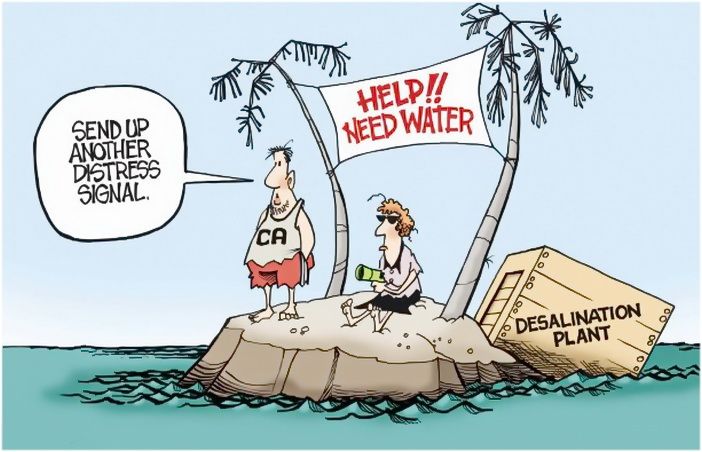Month: April 2015


Renown Physicist Puts Global Warming In Check!
Renown physicist Freeman Dyson says CO2 does not worry him… montage
The climate models used by alarmist scientists to predict global warming are getting worse, not better; carbon dioxide does far more good than harm; and President Obama has backed the “wrong side” in the war on “climate change.”
So says one of the world’s greatest theoretical physicists, Dr Freeman Dyson, the British-born, naturalised American citizen who worked at Princeton University as a contemporary of Einstein and has advised the US government on a wide range of scientific and technical issues.
In an interview with Andrew Orlowski of The Register, Dyson expressed his despair at the current scientific obsession with climate change which he says is “not a scientific mystery but a human mystery. How does it happen that a whole generation of scientific experts is blind to the obvious facts.”
This mystery, says Dyson, can only partly be explained in terms of follow the money. Also to blame, he believes, is a kind of collective yearning for apocalyptic doom.
It is true that there’s a large community of people who make their money by scaring the public, so money is certainly involved to some extent, but I don’t think that’s the full explanation.
It’s like a hundred years ago, before World War I, there was this insane craving for doom, which in a way, helped cause World War I. People like the poet Rupert Brooke were glorifying war as an escape from the dullness of modern life. [There was] the feeling we’d gone soft and degenerate, and war would be good for us all. That was in the air leading up to World War I, and in some ways it’s in the air today.
Dyson, himself a longstanding Democrat voter, is especially disappointed by his chosen party’s unscientific stance on the climate change issue.
It’s very sad that in this country, political opinion parted [people’s views on climate change]. I’m 100 per cent Democrat myself, and I like Obama. But he took the wrong side on this issue, and the Republicans took the right side…..
[….]
He concludes:
“I am hoping that the scientists and politicians who have been blindly demonizing carbon dioxide for 37 years will one day open their eyes and look at the evidence.”
- Also read this YALE INTERVIEW of Dr. Dyson

Celebrating 18-Years and 4-Months of No Global Warming
No high-schooler has experienced warming and every elementary aged kid has experienced a slight cooling.
By-the-way, I really do not celebrate it staying the same, I believe life thrives when it gets warmer. More people die due to cold.
Via Climate Depot

Celebrating another month of shoving facts in environmentalists faces when they bemoan deniers.
Global Satellite Temperatures Fall Again In March
‘Both satellite datasets have been released for March, and show a drop in global temperatures for the second month running. According to both UAH and RSS,current temperatures are now below where they were at the start of last year. 1998 and 2010 temperatures remain well above anything seen in the last year.’

Only Secular Ideas Can Be Protected Under Law ~ Colorado
I love ALL people who love freedom! >>> “Gay Woman Apologizes To Christian-Owned Indiana Pizzeria, Sends Donation.” See also this story: “Two Lovely and Freedom Loving Lesbians Stand Up To Gay Bullies!“
Breitbart notes that discrimination, seemingly, can only be in one direction:
…Last March, Jack went to Azucar Bakery and requested two cakes to be decorated with biblical messages. “I requested two cakes, each in the shape of an open Bible. On the first cake I requested on one page, ‘God hates sin — Psalm 45:7,’ and on the facing page, ‘Homosexuality is a detestable sin — Leviticus 18:22,’” Jack said.
Jack also said:
On the second cake I requested on one page, “God loves sinners,” and on the facing page, “While we were yet sinners Christ died for us – Romans 5:8.” I also requested a decoration of two groomsmen holding hands with a cross in the background with a ghostbusters symbol over it to illustrate that such a union is unacceptable biblically.
On Good Friday, the Department of Regulatory Agencies handed down its decision that refusing such a request did not constitute discrimination.
Jack has decried what he calls the “hypocrisy” of the decision, after the same department found a Christian baker guilty of discrimination for declining to bake a cake for a gay wedding….
In a conversation on my FaceBook, this question was posed:
Not saying it’s morally right, but isn’t that where people come in, to either purchase goods or not purchase goods from a business?
To which I replied:
Correct. Even below the Constitutional idea of Conscience objections due to religious objections… which the Federal and 20 state laws would make it incumbent on the cake shop owner to show a real religious foundation for their objection [withholding of services] to a specific event. LIKE the federal government allows the person not going to war in a draft because of deeply held religious convictions, they as well have to show the burden of their religious objection…
…there is the Constitutional idea of entering into contractual agreements with your fellow man without the government getting involved. This idea was found in early Christian thinking, grew immensely in Reformational thinking, influenced heavily the Western idea of law, and was a legal foundation to the philosophy that penned our Founding document:
▼ See my bibliography I used for a final paper in a seminary class.
So, the person wanting the service, if they cannot get it through an agreement with “said-shop-a,” there is always “said-shop-b.” If the consensus of the free market works against shop-a, then shop “a” will close due to free market values if they refuse to supply what the people want.
Both videos in a recent post of mine explain this concept of the free-market well. And this article explains a bit the “freedom of contract” in relation to the current issue.
The same issue is hitting across the pond as well. One point that I think goes well with the above idea that discrimination can happen to both the secular and religious person is this, via National Review:
“If supporting same-sex marriage is a protected political opinion, so is supporting traditional marriage,” Simon Calvert, deputy director of the Christian Institute, which is supporting the bakery, told the Telegraph. “Is the commission seriously saying that all business owners have to be willing to promote every political cause or campaign, no matter how much they disagree with it? Does a printer have no right to refuse to print posters for the BNP or Islamic State?”
Gay Patriot comments on the above that:
- “some animals are more equal than others”
…One set of rules for the politically favored, a different set of rules for everybody else. That’s America under the Obamacrats.
Note: According to a liberal polling outfit, only 32% of Americans support punishing people for refusing to take part in gay weddings. Unfortunately, those 32% control the media, academia, the courts, and the government.

When Liberals Use WWJD Against RFRA ~ MachoSauce
See more at Alfonzo’s site:
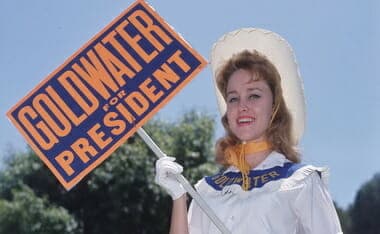
The American Experiment Wanes ~ Indiana and Religious Discrimination
Here is the discussion between Henry Salvatori Professor of Law & Community Service at Chapman University Fowler School of Law, John Eastman, and Dennis Prager about the law in Indiana and the failing American experiment:
In the second hour Dennis ruminates on the first hour and the discussion he had with Professor Eastman:
And as a bonus, I isolated Prager admitting that he was wrong and Barry Goldwater was right:
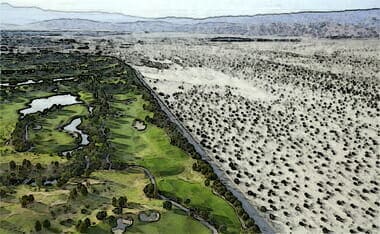
Victor Davis Hanson on the California Drought ~ City Journal
Just as California’s freeways were designed to grow to meet increased traffic, the state’s vast water projects were engineered to expand with the population. Many assumed that the state would finish planned additions to the California State Water Project and its ancillaries. But in the 1960s and early 1970s, no one anticipated that the then-nascent environmental movement would one day go to court to stop most new dam construction, including the 14,000-acre Sites Reservoir on the Sacramento River near Maxwell; the Los Banos Grandes facility, along a section of the California Aqueduct in Merced County; and the Temperance Flat Reservoir, above Millerton Lake north of Fresno. Had the gigantic Klamath River diversion project not likewise been canceled in the 1970s, the resulting Aw Paw reservoir would have been the state’s largest man-made reservoir. At two-thirds the size of Lake Mead, it might have stored 15 million acre-feet of water, enough to supply San Francisco for 30 years. California’s water-storage capacity would be nearly double what it is today had these plans come to fruition. It was just as difficult to imagine that environmentalists would try to divert contracted irrigation and municipal water from already-established reservoirs. Yet they did just that, and subsequently moved to freeze California’s water-storage resources at 1970s capacities.
All the while, the Green activists remained blissfully unconcerned about the vast immigration into California from Latin America and Mexico that would help double the state’s population in just four decades, to 40 million. Had population growth remained static, perhaps California could have lived with partially finished water projects. The state might also have been able to restore the flow of scenic rivers from the mountains to the sea, maintained a robust agribusiness sector, and even survived a four-or-five-year drought. But if California continues to block new construction of the State Water Project as well as additions to local and federal water-storage infrastructure, officials must halve California’s population, or shut down the 5 million acres of irrigated crops on the Central Valley’s west side, or cut back municipal water usage in a way never before done in the United States.
Victor Davis Hanson, “The Scorching of California: How Green Extremists Made a Bad Drought Worse,” The City Journal, Winter 2015 (Vol 25, No. 1), 82.
California governor Jerry Brown had little choice but to issue a belated, state-wide mandate to reduce water usage by 25 percent. How such restrictions will affect Californians remains to be seen, given the Golden State’s wide diversity in geography, climate, water supply, and demography.
We do know two things. First, Brown and other Democratic leaders will never concede that their own opposition in the 1970s (when California had about half its present population) to the completion of state and federal water projects, along with their more recent allowance of massive water diversions for fish and river enhancement, left no margin for error in a state now home to 40 million people. Second, the mandated restrictions will bring home another truth as lawns die, pools empty, and boutique gardens shrivel in the coastal corridor from La Jolla to Berkeley: the very idea of a 20-million-person corridor along the narrow, scenic Pacific Ocean and adjoining foothills is just as unnatural as “big” agriculture’s Westside farming. The weather, climate, lifestyle, views, and culture of coastal living may all be spectacular, but the arid Los Angeles and San Francisco Bay-area megalopolises must rely on massive water transfers from the Sierra Nevada, Northern California, or out-of-state sources to support their unnatural ecosystems.
Now that no more reservoir water remains to divert to the Pacific Ocean, the exasperated Left is damning “corporate” agriculture (“Big Ag”) for “wasting” water on things like hundreds of thousands of acres of almonds and non-wine grapes. But the truth is that corporate giants like “Big Apple,” “Big Google,” and “Big Facebook” assume that their multimillion-person landscapes sit atop an aquifer. They don’t—at least, not one large enough to service their growing populations. Our California ancestors understood this; they saw, after the 1906 earthquake, that the dry hills of San Francisco and the adjoining peninsula could never rebuild without grabbing all the water possible from the distant Hetch Hetchy watershed. I have never met a Bay Area environmentalist or Silicon Valley grandee who didn’t drink or shower with water imported from a far distant water project.
The Bay Area remains almost completely reliant on ancient Hetch Hetchy water supplies from the distant Sierra Nevada, given the inability of groundwater pumping to service the Bay Area’s huge industrial and consumer demand for water. But after four years of drought, even Hetch Hetchy’s huge Sierra supplies have only about a year left, at best. Again, the California paradox: those who did the most to cancel water projects and divert reservoir water to pursue their reactionary nineteenth-century dreams of a scenic, depopulated, and fish-friendly environment enjoy lifestyles predicated entirely on the fragile early twentieth-century water projects of the sort they now condemn.
[….]
We’re suffering the ramifications of the “small is beautiful,” “spaceship earth” ideology of our cocooned elites. Californians have adopted the ancient peasant mentality of a limited good, in which various interests must fight it out for the always scarce scraps. Long ago we jettisoned the can-do visions of our agrarian forebears, who knew California far better than we do and trusted nature far less. Now, like good peasants, we are at one another’s throats for the last drops of a finite supply.
(see also: The Scorching of California)
California, where cool coastal fog is perfect for growing standard broccoli, currently produces more than 90 percent of the broccoli grown in the United States. If California were to disappear, what would the American diet be like?
Expensive and grainy. California produces a sizable majority of many American fruits, vegetables, and nuts: 99 percent of artichokes, 99 percent of walnuts, 97 percent of kiwis, 97 percent of plums, 95 percent of celery, 95 percent of garlic, 89 percent of cauliflower, 71 percent of spinach, and 69 percent of carrots (and the list goes on and on). Some of this is due to climate and soil. No other state, or even a combination of states, can match California’s output per acre. Lemon yields in California, for example, are more than 50 percent higher than in Arizona. California spinach yield per acre is 60 percent higher than the national average.
Without California, supply of all these products in the United States and abroad would dip, and in the first few years, a few might be nearly impossible to find. Orchard-based products in particular, such as nuts and some fruits, would take many years to spring back…
(Slate)
Nature
The first California drought, of course, is natural. We are now in the midst of a fourth year of record low levels of snow and rain.
Californians have no idea that their state is a relatively recent construct — only 165 years old, with even less of a pedigree of accurate weather keeping. When Europeans arrived in California in the 15th and 16th centuries, they were struck by how few indigenous peoples lived in what seemed paradise — only to learn that the region was quite dry on the coast and in the interior…
[….]
Hubris
If one studies the literature on the history and agendas of the California State Water Project and the federal Central Valley Project, two observations are clear. One, our ancestors brilliantly understood that Californians always would wish to work and live in the center and south of the state. They accepted that where 75% of the population wished to live, only 25% of the state’s precipitation fell. Two, therefore they designed huge transfer projects from Northern California that was wet and sparsely settled, southward to where the state was dry and populated. They assumed that northerners wanted less water and relief from flooding, and southerners more water and security from drought, and thus their duty was to accommodate both.
Nor were these plans ossified. Indeed, they were envisioned as expanding to meet inevitable population increases. The Temperance Flat, Los Banos Grandes, and Sites reservoirs were planned in wet years as safety deposits, once higher reservoirs emptied. As population grew larger, dams could be raised at Shasta and Oroville. Or huge third-phase reservoirs like the vast Ah Pah project on the Klamath River might ensure the state invulnerability from even 5-6 year droughts.
One can say what one wishes about the long ago cancelled huge Ah Pah project — what would have been the largest manmade reservoir project in California history — but its additional 15 million acre feet of water would be welcomed today. Perhaps such a vast project was mad. Perhaps it was insensitive to local environmental and cultural needs. Perhaps the costs were prohibitive — a fraction of what will be spent on the proposed high-speed rail project. Perhaps big farming would not pay enough of the construction costs. But one cannot say that its 15 million acre feet of water storage would not have been life-giving in a year like this…
[….]
One of the ironies of the current drought is that urbanites who cancelled these projects never made plans either to find more water or to curb population. Take the most progressive environmentalist in Los Angeles and the Bay Area, and the likelihood is that his garden and bath water are the results of an engineering project of the sort he now opposes.
Fantasies
The state and federal water projects were envisioned as many things — flood control, hydroelectric generation, irrigation, and recreation. One agenda was not fish restoration. Perhaps it should have been. But our forefathers never envisioned building dams and reservoirs to store water to ensure year-round fish runs in our rivers — a mechanism to improve on the boom-and-bust cycle of nature, in which 19th century massive spring flooding was naturally followed by August and September low, muddy, or dry valley rivers.
Engineering alone could ensure an unnatural river, where flows could be adjusted all year long, almost every year, by calibrated releases from artificial lakes, ensuring about any sort of river salmon or delta bait fish population one desired. One may prefer catching a salmon near Fresno to having a $70 billion agricultural industry, but these days one cannot have both. Releasing water to the ocean in times of drought was not the intention of either the California State Water Project or the Central Valley Project…
[….]
Population
Even with drought, cancellations of dams, and diversions of contracted water to the ocean, California might well not have been imperiled by the present drought — had its population stayed at about 20 million when most of the water projects were cancelled in the mid-1970s. Unfortunately the state is now 40 million — and growing. Illegal immigration — half of all undocumented aliens live in California — has added millions to the state population. And agriculture is a key route for Mexican immigrants to reach the middle class. Either the state should insist on closing the borders and encourage emigration out of state to no-tax states (which is already happening at about the rate of 1000 to 2000 people per week), or it should build the infrastructure and create the job opportunities to accommodate newcomers in a semi-arid landscape. That would mean that the vast 4-6 million-acre west side of California’s Central Valley remains irrigated, and that there is continued water made available to a 500-mile dry coastal corridor to accommodate a huge influx of immigrants.
Is it liberal or illiberal to ensure that there will be no new water for a vast new San Jose south of San Jose, or that there will prohibitions on immigration and population growth that would halt a new San Jose? Perhaps the liberal position would be for Silicon Valley grandees to relocate to the wet and rainy Klamath River Basin, where it could grow without unnaturally imported water from the Sierra Nevada. In a truly eco-friendly state, Stanford and Berkeley would open new satellite campuses near the Oregon border to match people with water.
[….]
One reality we know does not work: deliberate retardation of infrastructure to discourage consumption and population growth, in the manner of Jerry Brown’s small-is-beautiful campaign of the 1970s. Ossifying the 99 and 101 freeways at 1960s levels did not discourage drivers from using them. It only ensured slower commute times, more fossil fuel emissions, and far more dangerous conditions, as more drivers fought for less driving space.
Not building dams and reservoirs did not mean fewer people would have water or food and thus would not keep coming to California, but only that there would be ever more competition — whether manifested in tapping further the falling aquifer or rationing residential usage — for shrinking supplies.
One theme characterizes California’s attitude about water. Liberal orthodoxy is never consistent. While it may be seen as progressive to champion river and delta restoration or to divert reservoir water for scenic and environmental use, or to discourage more development of agricultural acreage, the results in the real world are hardly liberal….

The Handshake vs Air Kisses
Vincent’s status as a woman is what makes her observations of male behavior fresh – introducing herself to some guys in a bowling league, she’s touched by the ritual howyadoin’, man-to-man handshake, which, “from the outside . . . had always seemed overdone to me,” but from the inside strikes her as remarkably warm and inclusive, worlds away from the “fake and cold” air kisses and limp handshakes exchanged by women. But in its best moments, “Self-Made Man” transcends its premise altogether, offering not an undercover woman’s take on male experience, but simply a fascinating, fly-on-the-wall look at various unglamorous male milieus that are well off the radar of most journalists and book authors.
That bowling league, for example. Norah-as-Ned commits to it for eight months, becoming the weak link on a four-man team of working-class white men. (Vincent has changed the names of the characters and obscured the locations to protect the identities of her subjects.) The resultant chapter is as tender and unpatronizing a portrait of America’s “white trash” underclass as I’ve ever read. “They took people at face value,” writes Vincent of Ned’s teammates, a plumber, an appliance repairman and a construction worker. “If you did your job or held up your end, and treated them with the passing respect they accorded you, you were all right.” Neither dumb lugs nor proletarian saints, Ned’s bowling buddies are wont to make homophobic cracks and pay an occasional visit to a strip club, but they surprise Vincent with their lack of rage and racism, their unflagging efforts to improve Ned’s atrocious bowling technique and “the absolute reverence with which they spoke about their wives,” one of whom is wasting away from cancer.
Men tend to have ways to help each other through relationships that differ somewhat from their female counterparts. For instance, Nora Vincent dressed as a man for 18-months and later wrote a book on the experience. One reviewer at Amazon notes the following:
- As an old-school feminist, I began the book with all the pre-conceived notions about men that we’ve gathered over the years and hugged to our chests. Bam! Norah Vincent dispels all of those and more in this can’t-put-down book. A woman posing as a man. Sensational? Perhaps. However, Ms. Vincent has managed to write an unbiased, often touching and frequently very funny book about the lives men lead. A lasting moment from the book, in my mind: Vincent’s description of a male handshake with another man, warm and welcoming, v. a woman-to-woman hug and air-kiss, superficial and fleeting.

“He’s Alive!” (Easter Reflections Through Song)

Gov. Jindal Talks About Religious Liberty and America’s Founding

Soldier Asks Karl Rove To Apologize for Iraq War
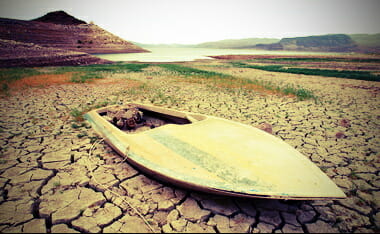
Decades To Prepare ~ California’s Lost Opportunities
A great article by Hot Air. This is the end of it… to read the entire thing, click through.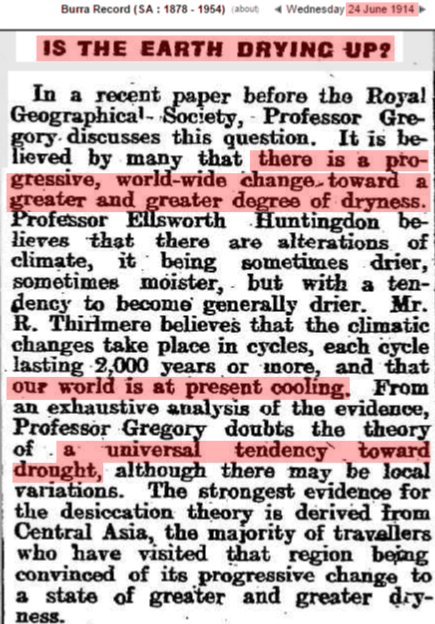
…Southern California has been in the process of running out of water for decades (if not longer) and the current drought is simply amplifying the effects and hastening the decline. I’ve been reading dire (and accurate) predictions about this issue for decades. Nearly twenty years ago there were cautionary tales coming out which discussed the fact that the region was essentially a desert when settlers began moving in and even the relatively small population in the nation’s early history already dwarfed the available natural water supplies. (This is from 1998, long before the current drought cycle.)
Not that we aren’t preoccupied with the issue of future water supplies for a good reason. In the LA Basin alone, we have approximately 6% of California’s habitable land but only .06% of the State’s stream flow — yet we hold over 45% of the State’s population. And if the population projections are to be believed, the entire southland is “scheduled” to grow from our current 16 million to over 24 million people. When policy questions are asked about whether Southern California can support this level of growth, the issue of greatest concern is not traffic or air quality or even quality of life, it is water. And the predominant question asked is “where will this water come from?”
Our water fears are not new. Since the pueblo days of Los Angeles, the lack of local water resources has been seen as the primary problem for the southland’s economic future. All plans for the development of the region have hinged around schemes to secure new water supplies — a fact recognized by Carey McWilliams, the pre-eminent historian of the southland, who wrote in 1946 that “God never intended Southern California to be anything but desert…Man has made it what it is.”
Going back to earlier in the last century, we find that the original reason that Hollywood voted to join the municipality of Los Angeles in 1910 was to gain access to their water rights. The area was already being drained by the growing population and would require later river diversions to feed the thirst of the area. The addition of a drought is a much harsher blow for an artificially created habitable zone.
But is the drought situation something new? Actually, not only the western portion of North America, but central and South America have apparently been experiencing these same cycles for as long as human beings have been around. One of the earliest recorded, but most massive examples was the curious disappearance of the million plus strong civilization of the Mayans more than a thousand years ago. What happened to them? Yep… a series of crippling, decade long droughts.
Identifying annual titanium levels, which reflect the amount of rainfall each year, the Swiss and U.S. researchers found that the pristine sediment layers in the basin formed distinct bands that correspond to dry and wet seasons. According to the scientists, there were three large droughts occurring between 810 and 910 A.D., each lasting less than a decade.
The timing of the droughts matched periodic downturns in the Maya culture, as demonstrated by abandonment of cities or diminished stone carving and building activity.
Experts say the Maya were particularly susceptible to long droughts because about 95 percent of their population centers depended solely on lakes, ponds, and rivers containing on average an 18-month supply of water for drinking and agriculture.
And according to the lake bed core samples they’ve taken, the drought which took out the Mayans wasn’t a one time event.
Scientists have found that the recurrence of the drought was remarkably cyclical, occurring every 208 years. That interval is almost identical to a known cycle in which the sun is at its most intense every 206 years. Nothing suggests the Maya knew anything about the sun’s change in intensity.
See? If only those pesky Mayans hadn’t been burning all of that coal and oil to power their dirty, industrial factories they’d probably still be down there today chopping out the hearts of their enemies. Ah… good times, my friends.

